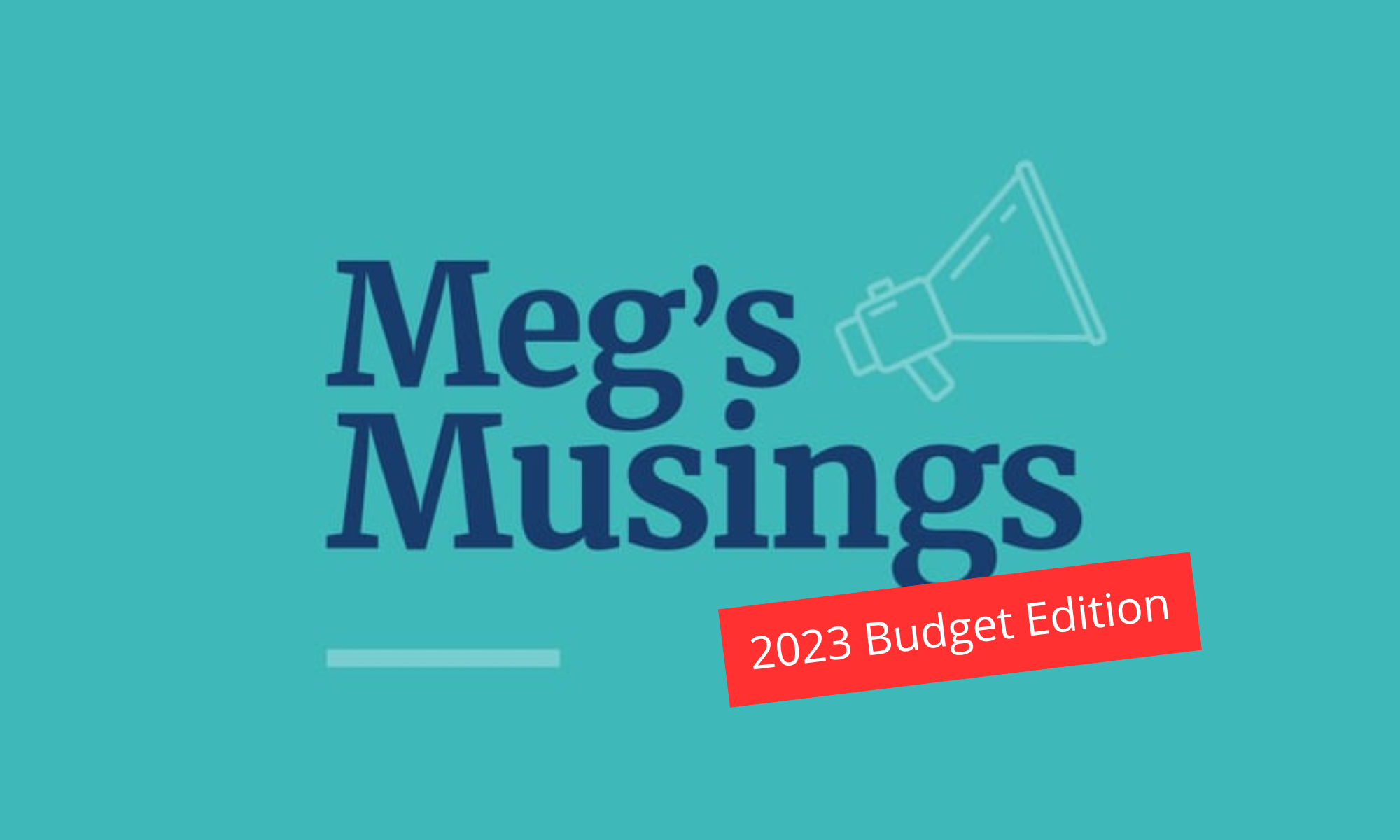
Meg Heffron
Managing Director
When we covered the last Federal budget in October 2022, I wrote “I don’t recall a Federal Budget with less to say about superannuation in my career of over 20 years.” Since then I’ve made two startling discoveries. One was that my superannuation career is actually closer to 30 years old AND it is possible to have an even less eventful budget than October 2022, and that’s the May 2023 Federal Budget.
Let’s enjoy that for a moment – as an industry we frequently complain that too many things get changed in super and the changes often feel like knee jerk reactions (when they’re negative) or vote buying exercises (when they’re positive). So having very little on super in the Budget is not entirely a bad thing (unless, like me, you get your jollies from reading hundreds of pages of Treasury papers every year).
This year, the Government clearly had bigger (non superannuation) fish to fry.
Probably the only two things worthy of note this year were:
- (At last) confirmation on the direction the Government will take when it comes to dealing with NALE (non arm’s length expenses) in super. Fellow nerds will remember this is an issue that arose from changes to our tax laws several years ago that deemed a superannuation fund to have NALI (non arm’s length income) when it paid too little for certain services (ie, when it incurred non arm’s length expenses). Lyn Formica covers the implications of the final position indicated in the budget here.
- Confirmation that the Government will indeed levy an additional tax on individuals with more than $3m in superannuation from 2025/26 onwards. Unfortunately we are still waiting for draft legislation explaining exactly how the measure will work so we are still guided by earlier Treasury papers on the subject. And the fact that estimates of the tax revenue to be raised haven’t changed since these papers were released also suggests that the Government hasn’t really wavered in the design despite significant criticism. For example, we had hoped the Government might adjust the method used to calculate the tax (to avoid a current criticism that the proposed method effectively taxes unrealised gains), might index the $3m threshold or might allow those who exceed it to withdraw some of their super even if they hadn’t yet reached the age where this would normally be allowed.
It seems that won’t be happening and so the details we have already provided in blogs here and additional, more detailed, content in our Super Companion (Heffron’s unique online encyclopaedia of all things superannuation and SMSF) remain on point.
One thing is for sure – those with substantial superannuation balances will have a renewed appreciation for how their “total superannuation balance” is calculated, since it’s this amount that will be checked against the $3m threshold. We’ve got a great module on how this is worked out in our Education Bites online learning series as well as a blog on just some of the quirks here.
Of course another aspect of the Budget that is always relevant is what’s not included. This year, there were some things we’d love to have seen that didn’t rate a mention:
- An amnesty to allow those with so-called legacy pensions to escape them – despite being first promised by the previous Government several years ago, this has still not seen the light of day. I called it a travesty in October. I have no better words now, and
- Relaxing residency requirements for SMSFs – still apparently on the agenda for the Government but draft legislation has not been released or the issue was not discussed at all in the budget papers.
There were also some things that we wondered about but weren’t entirely surprised to see ignored.
For example, there was no mention of continuing the current 50% reduction in minimum pension payments beyond 1 July 2023, so these will return to normal levels in 2023/24. It’s time to make sure funds have enough cash to pay much higher pension amounts next year. Or there may be some members considering extra payments now (above the minimum required for 2022/23) who decide to hold off until July 2023 to make up some of next year’s payments.
There had also been murmurings that the Government might freeze the transfer balance cap so that it wasn’t indexed (increased) from $1.7m to $1.9m from 1 July 2023 in line with current legislation. No announcements presumably mean that increase will go ahead as planned – with all the interesting planning consequences we’ve discussed before that relate to both contributions and pensions (see some of our blogs here, here and here). Remember that even when the standard transfer balance cap is increased, not everyone will have a transfer balance cap of $1.9m – some people will stay on $1.6m or $1.7m and others will receive just some of the $200,000 increase. We are currently updating our free online calculator that allows you to work out the precise amount of indexation available for anyone based on the amounts previously checked against their transfer balance cap. We’ll let readers know when it’s available.
All in all, a quiet night for the Heffron technical team. And that’s probably not entirely a bad thing.
This article is for general information only. It does not constitute financial product advice and has been prepared without taking into account any individual’s personal objectives, situation or needs. It is not intended to be a complete summary of the issues and should not be relied upon without seeking advice specific to your circumstances.





